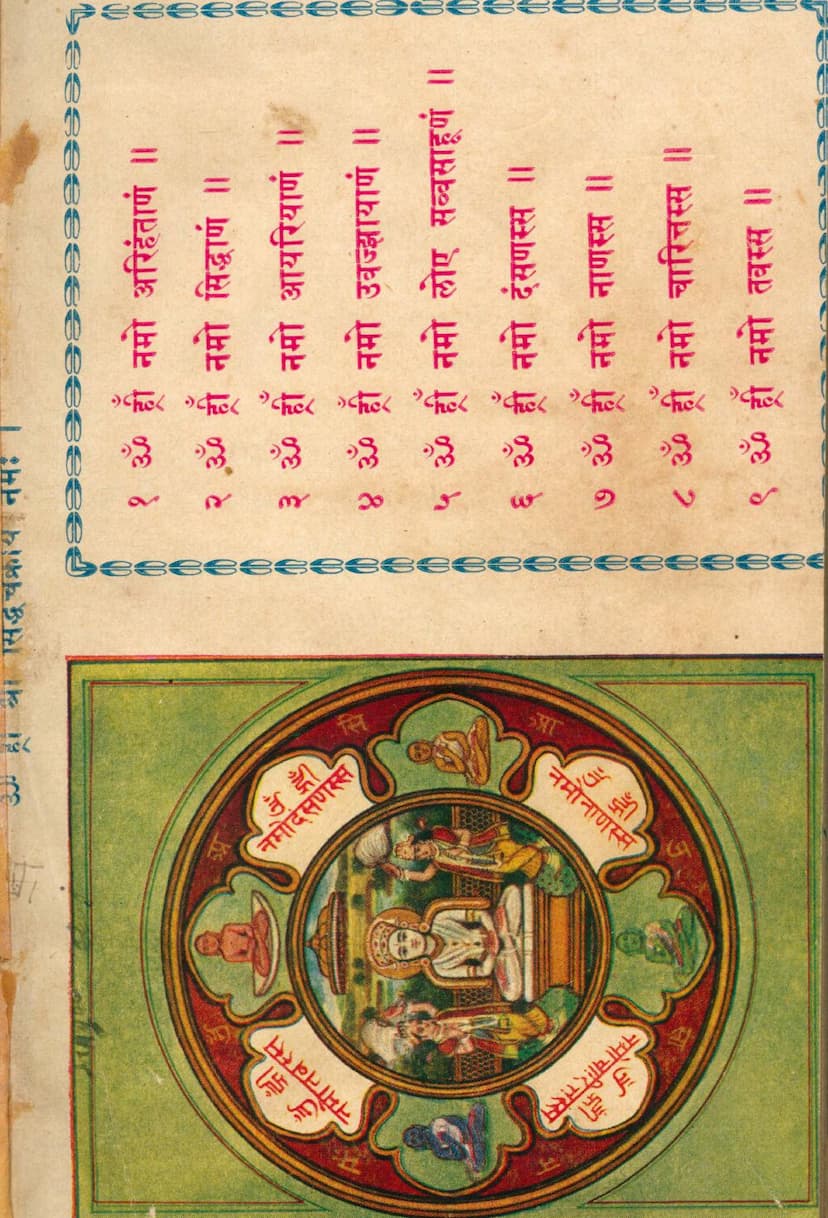Dharm Sadhna
Added to library: September 1, 2025

Summary
This document, titled "Dharm Sadhna" by Kundakundvijay, is a comprehensive Jain text aimed at guiding individuals, particularly householders, on their spiritual journey towards self-realization and liberation. The book emphasizes the importance of Dharma Sadhana (spiritual practice) as the primary and most noble duty of human life, as human birth is considered the unique opportunity to engage in and perfect spiritual practices.
Key Themes and Content:
- The Rarity and Value of Human Birth: The text highlights that human birth is exceptionally rare, attained only after accumulating immense merit. This rare opportunity should not be squandered on worldly pursuits (Artha and Kama) but dedicated to Dharma Sadhana for achieving Moksha (liberation).
- Guidance from Great Acharyas: The book draws extensively from the teachings of eminent Jain Acharyas like Acharya Shri Haribhadrasurishwarji, Acharya Shri Hemchandrasurishwarji, and Upadhyay Shri Yashovijayji. Their works are presented as essential for understanding and practicing Jain principles, providing clarity on Jain philosophy, conduct, and spirituality.
- Comprehensive Scope of Dharm Sadhana: "Dharm Sadhna" covers over 650 topics relevant to daily life and spiritual development. It integrates various aspects of Jainism, including:
- Niti and Achara (Ethics and Conduct): Principles of justice, morality, right conduct, and righteous thought.
- Yoga and Adhyatma (Yoga and Spirituality): Practices related to yoga, meditation, and higher spiritual states.
- Mahamantra: The significance and practice of sacred Jain mantras, particularly the Navkar Mahamantra.
- Margaanusarita (Following the Path): The importance of adhering to the spiritual path, with emphasis on core Jain virtues.
- The Structure of the Book: The book is structured to guide the reader systematically:
- Foundational Principles: It begins by establishing the importance of foundational virtues like "Margaanusarita" (following the path) and the significance of the three jewels (Deva, Guru, Dharma).
- Devotion and Worship: It elaborates on the practice of devotion to the soul (Parmatma) through rituals and hymns.
- Layperson's Life (Grihastha Vrata): It details the vows and daily routines of a layperson (Shravaka), including the five anuvratas (minor vows), three gunavratas (qualifying vows), and four shilavratas (conduct-related vows).
- Daily Rituals and Practices: It covers the Shravaka's daily schedule, including the proper chanting of the Navkar mantra, Chaityavandan (temple worship), and other essential practices.
- Ultimate Practices: It delves into advanced spiritual practices like Samlekhan vrat (the vow of equanimity before death) and the nature of Atmajnana (self-knowledge) through techniques like Koshaya Jayan (conquering passions), Indriya Jay (victory over senses), and Manah Shuddhi (purification of the mind).
- The Role of Mantras: The text explains the power and practice of mantras, especially the Navkar mantra, as a means of spiritual purification and achievement.
- Emphasis on Inner Purity: While detailing external practices, the book consistently emphasizes the importance of internal purity, right intention (Bhavana), and sincere devotion in all spiritual endeavors.
- Accessibility of Language: The text is written in simple Gujarati, making profound spiritual and philosophical concepts accessible to the general populace.
- Inspiration from Acharyas: The book highlights the profound impact of the works of Acharyas like Haribhadra Suri, Hemchandra Suri, and Yashovijayji, emphasizing how their writings helped individuals attain steadfastness in Jainism and cultivate a deep connection with spiritual practices.
- The Agam Shastras: The text acknowledges the Agam Shastras as the primary Jain scriptures, accessible only to the highly learned. However, it presents other texts that follow the Agams as gateways for broader access to spiritual knowledge, thereby ensuring that all beings, irrespective of their intellectual capacity, can engage in Dharma Sadhana.
- Key Concepts Explained: The book provides detailed explanations of:
- The nature of Dharma: Differentiating between Vyavahar (conventional) and Nishchay (ultimate) Dharma.
- The qualifications of a true scripture: Defining Kashuddha, Chhedashuddha, and Tapashuddha Agams.
- The importance of context: Explaining the significance of Dravya (substance), Kshetra (place), Kala (time), and Bhava (attitude) in understanding spiritual practices.
- The four Bhavanas: Maitri (friendship), Pramoda (joy in others' virtue), Karuna (compassion), and Madhyasthya (equanimity) are presented as the roots of spiritual growth.
- The concept of Upasana (worship): Detailing the significance of devotion to Deva, Guru, and Dharma, and the role of Jin Pratima (idols) in meditation and fostering devotion.
- The eight Angas of Yoga: Yam, Niyam, Asana, Pranayama, Pratyahara, Dharana, Dhyana, and Samadhi are explained as essential components of spiritual practice.
- The power of the Navkar mantra: Its significance, various methods of chanting, and the profound benefits derived from its recitation and contemplation.
In essence, "Dharm Sadhna" is presented as a practical guide for Jains to cultivate a spiritually fulfilling life, leading towards ultimate liberation by adhering to the principles of Dharma, understanding the teachings of the great Acharyas, and diligently practicing the prescribed spiritual disciplines.